Know before buying a camera: teaching you to know what is the sensor size, focal length, aperture?
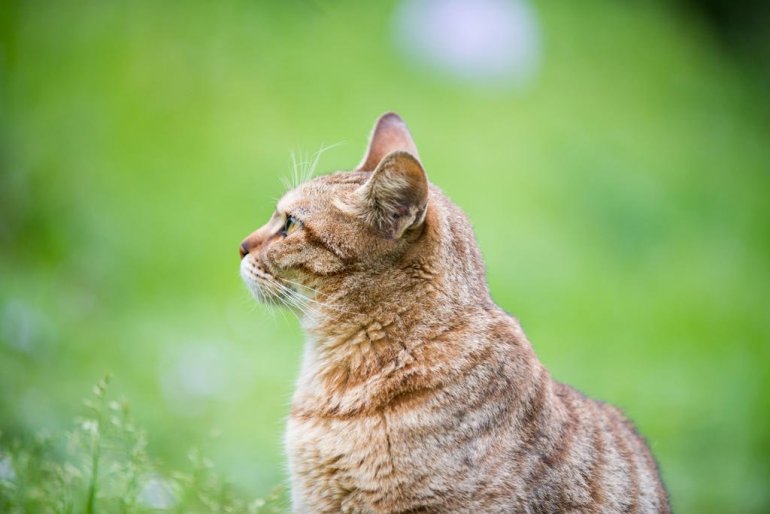
"When it comes to buying a camera, what appears in the mind is how to choose in the bunch of camera specifications. This article will be an easy-to-understand explanation about the three important camera specifications, which is “sensor size, focal length, and aperture," The specifications which the sales talking about are actually not that difficult at all. ”
Buying a camera is just like buying sets of the sound system. If you don't know what you want to buy and which specifications you need, and unfortunately you encounter an unscrupulous camera merchant, you will only fall prey to them. There may be people who would like to do
some homework through the internet, and although there are innumerable camera specifications information on the internet, how many people can truly understand the “sensor size”, “aperture” and “focal length”? So today I will try to use a simpler and more straightforward way to tell you about the three specifications that the camera is most often referred to by the merchants: sensor size, focal length, and aperture. Although there are a lot of key points to know to buy a camera, according to my personal experience, the most commonly mentioned and most easily confusing is usually these three camera specifications. Therefore, I will introduce the meanings represented by these three specifications in an easier-to-understand way for you all and how to select the suitable specifications to fulfill your needs. The following will be introduced in accordance with the “sensor size", "focal length" and "aperture" specifications, hoping to able to aid anyone who wants to get a camera!
The key to determining the quality of image and depth of field: Sensor size
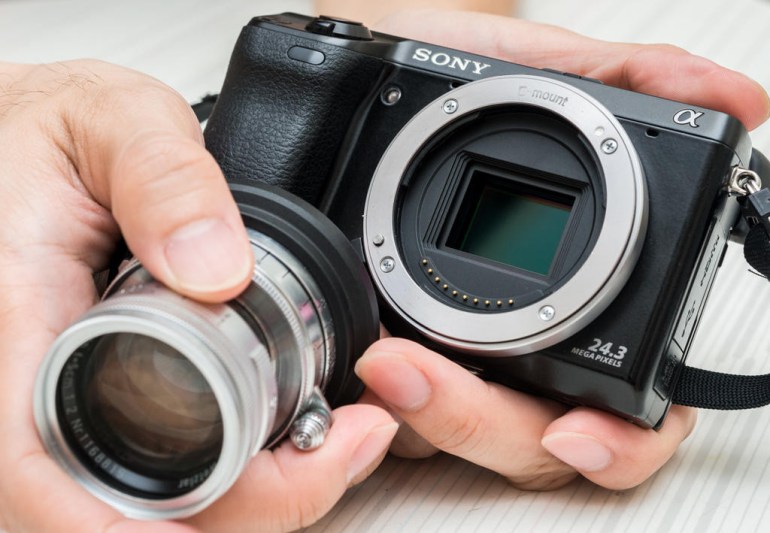 The figure above: The green thing inside is the photosensitive element, which is visible when MILC’s lens is removed.
No matter what cell phone you are using, digital camera, MILC, DSLR to shoot, as long as you are using a “digital” camera, then your camera must have the core element, which is the “photosensitive element”. The photosensitive element can be said as the “film” of the camera, which records all of the images’ information, can be said as the soul of the camera, and it is one of the factors to determine the quality of the image beside the lens. But here comes the problem: When the merchant tell you that “sensor size is very crucial”, is that true?
The figure above: The green thing inside is the photosensitive element, which is visible when MILC’s lens is removed.
No matter what cell phone you are using, digital camera, MILC, DSLR to shoot, as long as you are using a “digital” camera, then your camera must have the core element, which is the “photosensitive element”. The photosensitive element can be said as the “film” of the camera, which records all of the images’ information, can be said as the soul of the camera, and it is one of the factors to determine the quality of the image beside the lens. But here comes the problem: When the merchant tell you that “sensor size is very crucial”, is that true?
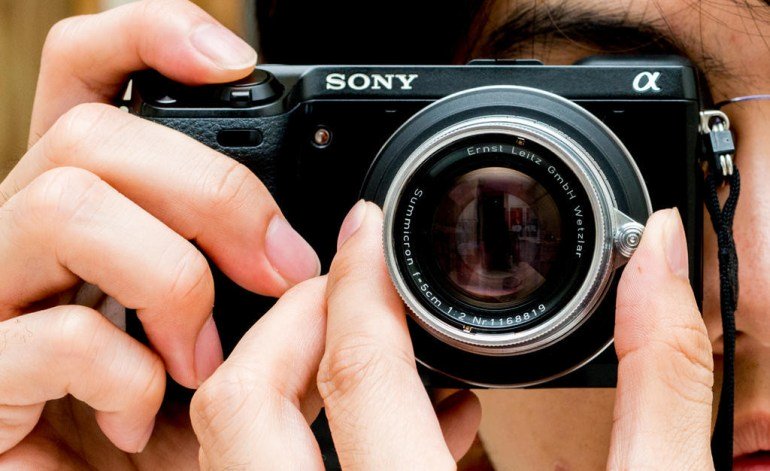 First of all, we have to understand that “what is sensor size”. Due to the costing, camera’s size and other factors, different factory designed different size of the photosensitive element of the digital camera, while the “sensor size” is known as the size of the photosensitive element. The figure below is the size chart of a different photosensitive element, the largest one is for the professional DSLR. While the next APS-C is used for the photosensitive element of the unprofessional DSLR, Sony or Fuji MILC, where the area is smaller than the full frame. For the M4/3 is the size for the Olympus and Panasonic’s MILC, and move downwards are for the smartphones, compact camera!
First of all, we have to understand that “what is sensor size”. Due to the costing, camera’s size and other factors, different factory designed different size of the photosensitive element of the digital camera, while the “sensor size” is known as the size of the photosensitive element. The figure below is the size chart of a different photosensitive element, the largest one is for the professional DSLR. While the next APS-C is used for the photosensitive element of the unprofessional DSLR, Sony or Fuji MILC, where the area is smaller than the full frame. For the M4/3 is the size for the Olympus and Panasonic’s MILC, and move downwards are for the smartphones, compact camera!
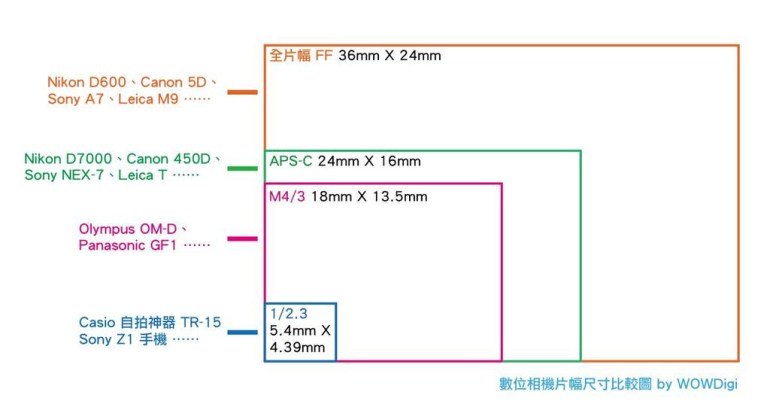 As far as the current technology is concerned, the sensor size is mostly direct influence by, and most perceived by the user is the three points: the image quality details, the depth of field, the focusing speed and accuracy. To avoid everyone's difficulty in understanding these three points, here's an explanation!
1. The image quality details:
The larger the sensor size, the more light that can be absorbed and record, therefore the light and shadow of the image, even the cat's hair at the top of the figure may have more details than the smaller sensor size. If you often enlarge the image or planning to work on photography, or if you are born with highly sensitive to the details of the image and you have the money, then the full-frame model is definitely your best choice. If the pictures you have taken are mostly shared on the Internet and you want to take pictures more easily, the smaller APS-C and M4/3 systems are your good partners~
2. The depth of field:
The larger the sensor size, you till get the shallower depth of field at the same aperture. In other words, the bokeh outside your subject is “more blur”. If you love to shoot a variety of bokeh photos to increase the texture, then you need to purchase at least 1 sensor (such as Sony RX100) or M4/3 or more sensor cameras to have the best picture just like the beginning figure of the cat! The super expensive and small sensor size selfie camera is absolutely impossible for you to shoot that beautiful broken! !
3. The focusing speed and accuracy:
Is the focus speed important? If you often use a camera to shoot some puppy, kittens or kids, then the ability to focus on the moving little guy is
a big test for the camera. If you don't have a high budget to purchase a camera and cannot directly to get DSLR, the M4/3 system will focus faster and more accurately than the APS-C MILC of the same budget, or even some high-end ones, on a budget of 20,000NTD to 30,000NTD, or even some of the full-frame DSLR cameras may not necessarily outperform the M4/3 system! If you want to balance the image quality, focus control and price, then the M4/3 system is definitely your best choice!
Besides to the above three priorities, the small sensor size has a big advantage: which is the camera is smaller in size and weight. The size and the weight of the M4/3 system camera are much smaller and lighter than those of the APS-C, full-frame camera, so if you want to put a good image quality camera in your small bag, then a camera with M4/3 or 1 sensor is definitely the best choice! As for the smaller size down further? I think unless you don't have a smartphone, then you better get to use that money to buy a larger sensor size camera! Don't waste your money!
Take picture closer or further rely on it: Lens focal length
Please remember the following information before you begin: Because all lens focal lengths are based on full frame, therefore the small frame camera must be multiplied by a different number to get the so-called "equivalent f ocal length", e.g. APS-C. The focal length of the lens must be multiplied by 1.5, so the 20mm lens will become 30mm on the APS-C and instantly change from "super" wide-angle to a wide-angle lens. While the smaller M4/3 must be multiplied by 2, so the 85mm portrait lens will instantly become a 170mm telescope lens! This is why the M4/3's fisheye wide-angle lens has a focal length of only 8mm, not
because it’s “pro”, but is it is not so short, after multiplying by two, there is no more wide-angle effect! The focal lengths I mentioned below are all based on the full frame, thus if you plan to purchase an M4/3 camera, divide the focal length I say by two, the APS-C camera is divided by 1.5, then you will get the correct focal length value! Therefore you won't get the wrong camera!
As far as the current technology is concerned, the sensor size is mostly direct influence by, and most perceived by the user is the three points: the image quality details, the depth of field, the focusing speed and accuracy. To avoid everyone's difficulty in understanding these three points, here's an explanation!
1. The image quality details:
The larger the sensor size, the more light that can be absorbed and record, therefore the light and shadow of the image, even the cat's hair at the top of the figure may have more details than the smaller sensor size. If you often enlarge the image or planning to work on photography, or if you are born with highly sensitive to the details of the image and you have the money, then the full-frame model is definitely your best choice. If the pictures you have taken are mostly shared on the Internet and you want to take pictures more easily, the smaller APS-C and M4/3 systems are your good partners~
2. The depth of field:
The larger the sensor size, you till get the shallower depth of field at the same aperture. In other words, the bokeh outside your subject is “more blur”. If you love to shoot a variety of bokeh photos to increase the texture, then you need to purchase at least 1 sensor (such as Sony RX100) or M4/3 or more sensor cameras to have the best picture just like the beginning figure of the cat! The super expensive and small sensor size selfie camera is absolutely impossible for you to shoot that beautiful broken! !
3. The focusing speed and accuracy:
Is the focus speed important? If you often use a camera to shoot some puppy, kittens or kids, then the ability to focus on the moving little guy is
a big test for the camera. If you don't have a high budget to purchase a camera and cannot directly to get DSLR, the M4/3 system will focus faster and more accurately than the APS-C MILC of the same budget, or even some high-end ones, on a budget of 20,000NTD to 30,000NTD, or even some of the full-frame DSLR cameras may not necessarily outperform the M4/3 system! If you want to balance the image quality, focus control and price, then the M4/3 system is definitely your best choice!
Besides to the above three priorities, the small sensor size has a big advantage: which is the camera is smaller in size and weight. The size and the weight of the M4/3 system camera are much smaller and lighter than those of the APS-C, full-frame camera, so if you want to put a good image quality camera in your small bag, then a camera with M4/3 or 1 sensor is definitely the best choice! As for the smaller size down further? I think unless you don't have a smartphone, then you better get to use that money to buy a larger sensor size camera! Don't waste your money!
Take picture closer or further rely on it: Lens focal length
Please remember the following information before you begin: Because all lens focal lengths are based on full frame, therefore the small frame camera must be multiplied by a different number to get the so-called "equivalent f ocal length", e.g. APS-C. The focal length of the lens must be multiplied by 1.5, so the 20mm lens will become 30mm on the APS-C and instantly change from "super" wide-angle to a wide-angle lens. While the smaller M4/3 must be multiplied by 2, so the 85mm portrait lens will instantly become a 170mm telescope lens! This is why the M4/3's fisheye wide-angle lens has a focal length of only 8mm, not
because it’s “pro”, but is it is not so short, after multiplying by two, there is no more wide-angle effect! The focal lengths I mentioned below are all based on the full frame, thus if you plan to purchase an M4/3 camera, divide the focal length I say by two, the APS-C camera is divided by 1.5, then you will get the correct focal length value! Therefore you won't get the wrong camera!
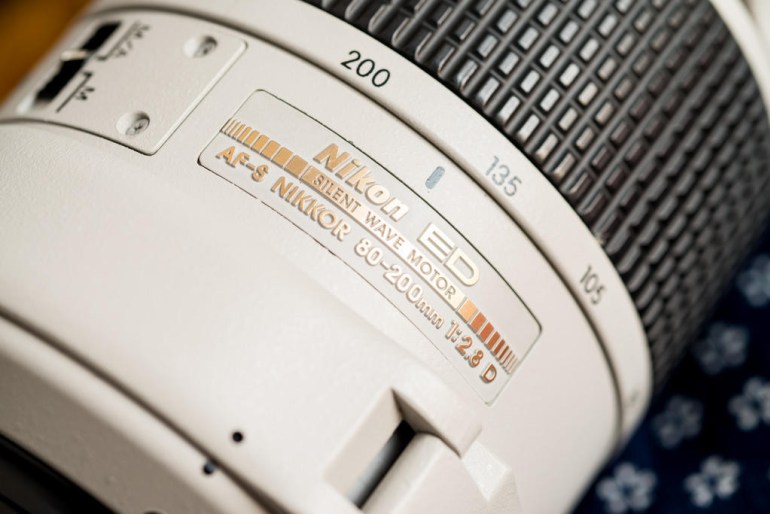 "You see, this camera has 12 times lens..." After the troublesome issue of fixing the sensor size, the second trouble problem came again: How much focal lengths does your camera need? In fact, the ability of camera zooming or wide-angle, these are determined by the camera lens "focal length (measurement in mm)", so you can link “times”, “zooming”, “wide-angle”, these three terms are associated with "focal length" so that you can quickly understand what “focal length” is used for.
"You see, this camera has 12 times lens..." After the troublesome issue of fixing the sensor size, the second trouble problem came again: How much focal lengths does your camera need? In fact, the ability of camera zooming or wide-angle, these are determined by the camera lens "focal length (measurement in mm)", so you can link “times”, “zooming”, “wide-angle”, these three terms are associated with "focal length" so that you can quickly understand what “focal length” is used for.
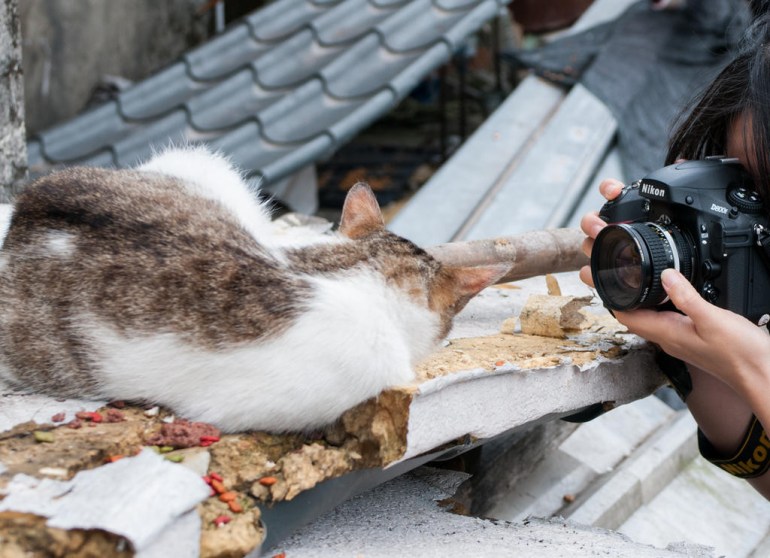 The so-called wide-angle lens is generally referred to as a lens with 50 mm or less, and 20 mm or less is a so-called "ultra wide-angle lens." The feature of the wide-angle lens is that even if you put the lens in close proximity, you can have a broader perspective by making it "The thing is still far away from you." Take the figure above as an example, the camera is so close to the cat. If using a cellphone, it will almost only capture only the cat's head, but how about using the 20mm wide-angle lens’s effect?
The so-called wide-angle lens is generally referred to as a lens with 50 mm or less, and 20 mm or less is a so-called "ultra wide-angle lens." The feature of the wide-angle lens is that even if you put the lens in close proximity, you can have a broader perspective by making it "The thing is still far away from you." Take the figure above as an example, the camera is so close to the cat. If using a cellphone, it will almost only capture only the cat's head, but how about using the 20mm wide-angle lens’s effect?
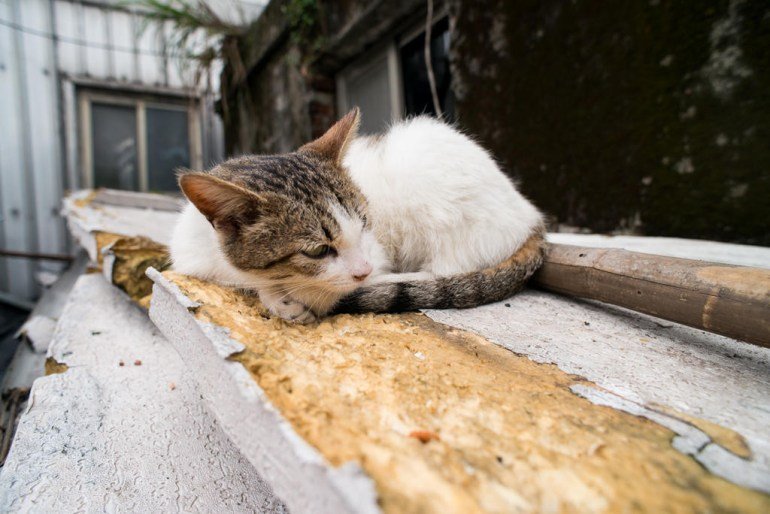 It's too far from the kitty! From the above figure, if you own a wide-angle lens, then you can shoot those cute little things closely, just like shooting the cat which is sleeping on your lap as figure below, or even shoot the delicacies in front of you!
It's too far from the kitty! From the above figure, if you own a wide-angle lens, then you can shoot those cute little things closely, just like shooting the cat which is sleeping on your lap as figure below, or even shoot the delicacies in front of you!
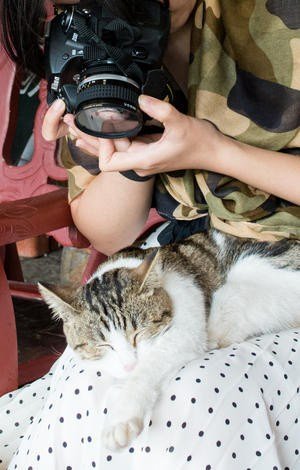 Figure above: To avoid just shoot the cat’s head, when you wish to take a picture of the cat on your lap, wide-angle lens will be a good choice.
Figure above: To avoid just shoot the cat’s head, when you wish to take a picture of the cat on your lap, wide-angle lens will be a good choice.
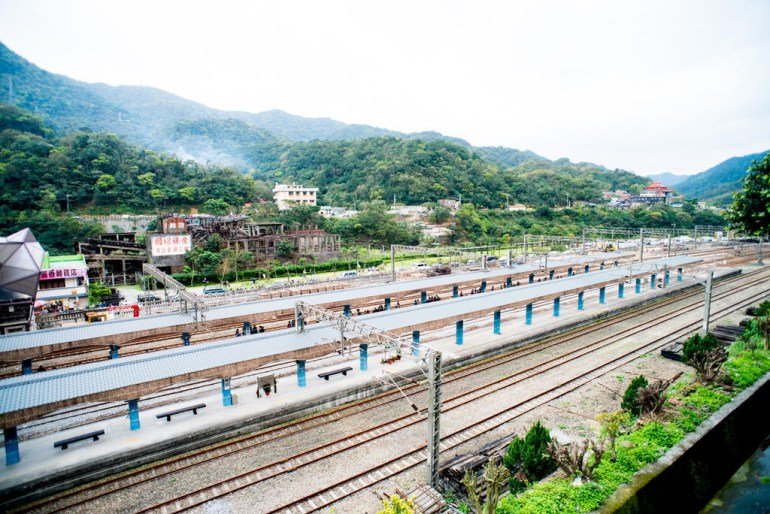 In fact, the wide-angle lens is normally used to take scenery pictures like the figure above, but actually, you can also shoot a close object with a wider background, which shows that it is a really useful lens.
In fact, the wide-angle lens is normally used to take scenery pictures like the figure above, but actually, you can also shoot a close object with a wider background, which shows that it is a really useful lens.
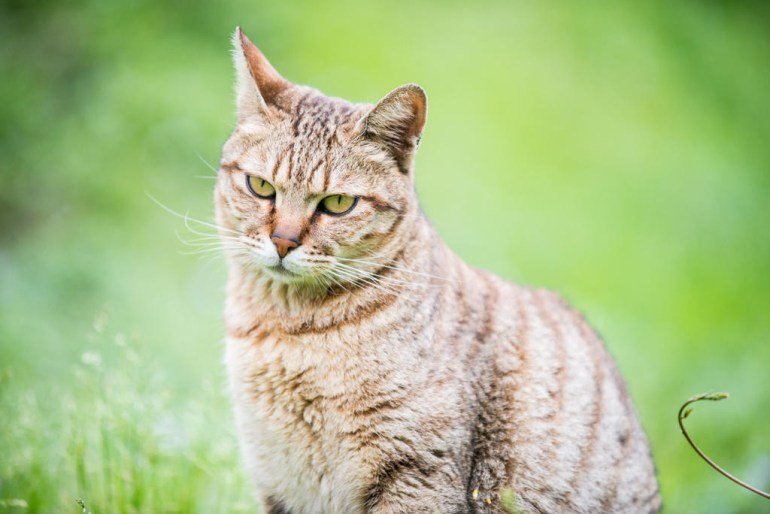 The next is so-called the “telephoto” lens! Generally, when we buy a camera, the shop assistant will say that “this is X times” camera. But what does this X-times mean? Actually, this multiple refers only to the multiple of the camera's wide-angle end and a telephoto end. For example, if a lens has a wide-angle end of 24mm and a telephoto end of 120mm, then there is a difference of five times, that is, a “five times (5X ) Optical zoom” digital camera.
The next is so-called the “telephoto” lens! Generally, when we buy a camera, the shop assistant will say that “this is X times” camera. But what does this X-times mean? Actually, this multiple refers only to the multiple of the camera's wide-angle end and a telephoto end. For example, if a lens has a wide-angle end of 24mm and a telephoto end of 120mm, then there is a difference of five times, that is, a “five times (5X ) Optical zoom” digital camera.
 The focal length of more than 80mm can be considered as a telephoto lens! This telephoto lens allows you to stand far away to shoot. However, if you want to photograph kittens on the roof or birds on the tree, you will need a lens with a distance of 150mm or more. So everyone now knows that the camera's “multiplier” can let you determine if this camera has telescopic functionality (usually 5x or more is consider telephoto), but if you want more accurately to buy a camera or lens you want, engage in clearly the meaning of "focal length" is absolutely very important!
Tips: The smaller the focal length number, the wider the shot, the greater the focal length number, the further the shoot.
The key to deciding whether or not you can shoot at night and taking pictures with awesome bokeh: Aperture
The focal length of more than 80mm can be considered as a telephoto lens! This telephoto lens allows you to stand far away to shoot. However, if you want to photograph kittens on the roof or birds on the tree, you will need a lens with a distance of 150mm or more. So everyone now knows that the camera's “multiplier” can let you determine if this camera has telescopic functionality (usually 5x or more is consider telephoto), but if you want more accurately to buy a camera or lens you want, engage in clearly the meaning of "focal length" is absolutely very important!
Tips: The smaller the focal length number, the wider the shot, the greater the focal length number, the further the shoot.
The key to deciding whether or not you can shoot at night and taking pictures with awesome bokeh: Aperture
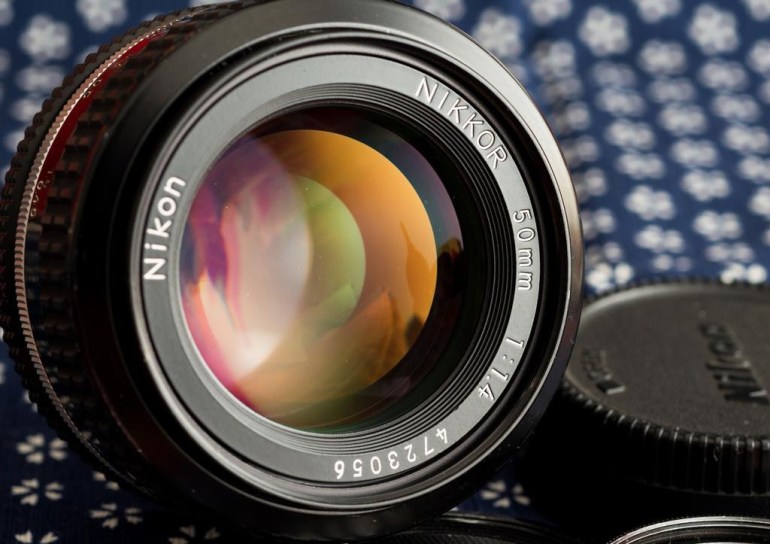 Aperture is just like human’s eye pupils, which is able to determine the amount of light entering the lens. The numbers f1.4, f1.8, f2.8, and f4
(for example, 1.4 in the above figure where the Nikon lens is without the “f”) on the general lens represent the "maximum aperture" of the lens,
and the minimum aperture of the lens usually it is not marked, therefore
just pay attention to this maximum aperture value.
Remark 1: The greater the aperture, the smaller the marked number. Thus, the 1.4 aperture is bigger than the 4 aperture.
Remark 2: The abbreviation of the aperture is the lowercase letter “f”, and the f xx,xx marked on the lens or camera mark is the aperture value.
Aperture is just like human’s eye pupils, which is able to determine the amount of light entering the lens. The numbers f1.4, f1.8, f2.8, and f4
(for example, 1.4 in the above figure where the Nikon lens is without the “f”) on the general lens represent the "maximum aperture" of the lens,
and the minimum aperture of the lens usually it is not marked, therefore
just pay attention to this maximum aperture value.
Remark 1: The greater the aperture, the smaller the marked number. Thus, the 1.4 aperture is bigger than the 4 aperture.
Remark 2: The abbreviation of the aperture is the lowercase letter “f”, and the f xx,xx marked on the lens or camera mark is the aperture value.
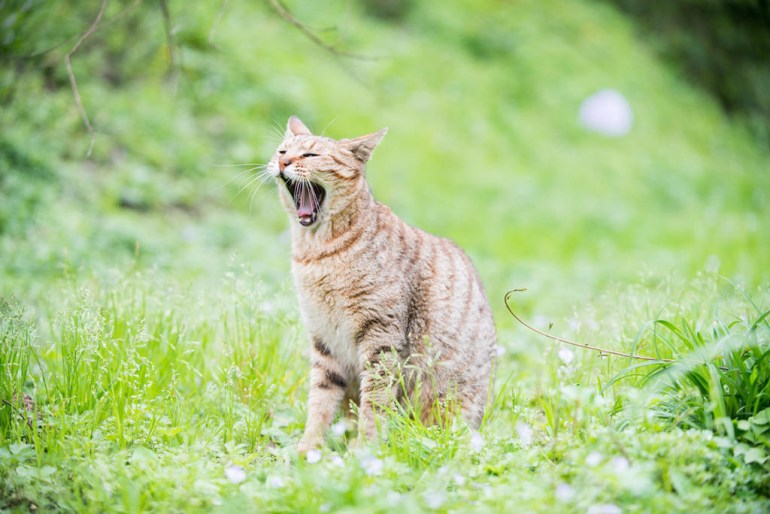 What is the significance of the maximum aperture? For photography newcomers, there are only two things to keep in mind: The first is determine the maximum amount of light, and the second determines the degree of "scattered" bokeh. The maximum amount of light indicates how much light can enter at the same shutter opening time, and the larger the aperture (the smaller the number) allows the camera to get more light in the same amount of time, therefore, faster shutter speeds produce darker images, which can prevent camera shake and dark images when shooting in dark places. For example, f2.8 can use a faster shutter speed than f6.3 to capture fast-moving objects in dark places or to avoid camera shake.
What is the significance of the maximum aperture? For photography newcomers, there are only two things to keep in mind: The first is determine the maximum amount of light, and the second determines the degree of "scattered" bokeh. The maximum amount of light indicates how much light can enter at the same shutter opening time, and the larger the aperture (the smaller the number) allows the camera to get more light in the same amount of time, therefore, faster shutter speeds produce darker images, which can prevent camera shake and dark images when shooting in dark places. For example, f2.8 can use a faster shutter speed than f6.3 to capture fast-moving objects in dark places or to avoid camera shake.
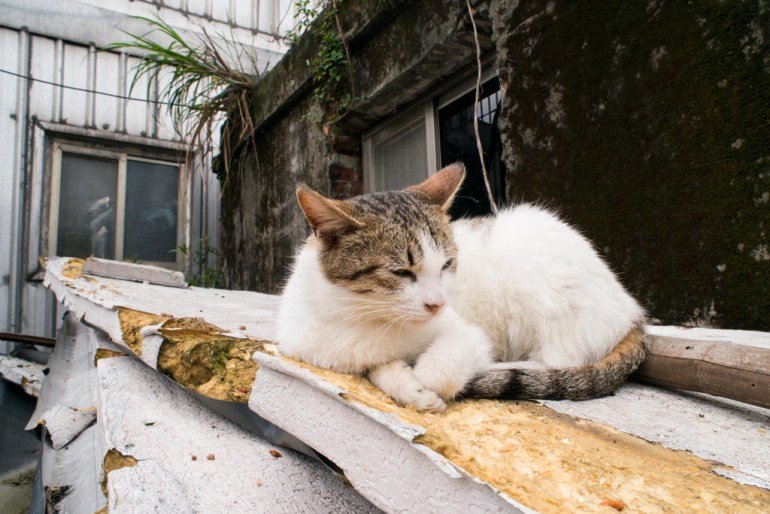 Another factor is the degree of “scattering” of the bokeh. Due to the optical physics, when the aperture is larger (the aperture value is smaller), the photo will have a more diffuse effect. For example, the picture of the cat in the upper figure (green background) was taken with an aperture of f2.8, thus all but the cat are blurry. The picture above is a cat shot with aperture f8. It can be seen that the background is still quite clear except for the cat itself. In simple, the larger the aperture, the murkier the background; the smaller the aperture, the clearer the scene. However, it should be noted that the large aperture bokeh is only
effective on large sensor size (an inch, M4/3 or higher) cameras, and small sensor size mobile phones and digital cameras (such as selfie
camera) are not available!
Tips: Small value as in large apertures, there will be bokeh; large value as in small apertures, there will be a clear background, and there will be stars flares when capturing the sun and light.
I believe everyone should have understood what the three important specifications of the camera represent. This way you can easily master the camera specifications you need, and you won't be fooled by all kinds of strange marketing messages! As long as you understand the theme you want to capture: For example, do you want to shoot far? Will you shoot in a narrow space? Do you like to take pictures with bokeh? Do you often shoot any moving small objects? As long as you first clarify your needs, and then compare to the three specifications above, you can list the camera specifications you need!
LIKE OUR PAGE:
Another factor is the degree of “scattering” of the bokeh. Due to the optical physics, when the aperture is larger (the aperture value is smaller), the photo will have a more diffuse effect. For example, the picture of the cat in the upper figure (green background) was taken with an aperture of f2.8, thus all but the cat are blurry. The picture above is a cat shot with aperture f8. It can be seen that the background is still quite clear except for the cat itself. In simple, the larger the aperture, the murkier the background; the smaller the aperture, the clearer the scene. However, it should be noted that the large aperture bokeh is only
effective on large sensor size (an inch, M4/3 or higher) cameras, and small sensor size mobile phones and digital cameras (such as selfie
camera) are not available!
Tips: Small value as in large apertures, there will be bokeh; large value as in small apertures, there will be a clear background, and there will be stars flares when capturing the sun and light.
I believe everyone should have understood what the three important specifications of the camera represent. This way you can easily master the camera specifications you need, and you won't be fooled by all kinds of strange marketing messages! As long as you understand the theme you want to capture: For example, do you want to shoot far? Will you shoot in a narrow space? Do you like to take pictures with bokeh? Do you often shoot any moving small objects? As long as you first clarify your needs, and then compare to the three specifications above, you can list the camera specifications you need!
LIKE OUR PAGE:
相關文章
-
Camera for girls, consideration of appearance and right tech on the inside
-
Things to know before buying a camera: 8 things to be get ready before purchasing
-
Introduction to the “Three Big Dragons and Three Little Dragons” of camera lenses
-
Dedicated to new photography fans, six thoughts on purchasing Speedlights
-
Get acquainted with the perspective compression of long-focus lens
-
Introduction to the classifications of Nikon manual focus lens
